How to grow spathiphyllum Sweet Chico at home on a windowsill?
To create coziness and harmony in their home, many gardeners put in rooms spathiphyllum... It not only gives the environment softness, but is also able to saturate the air with freshness and ensure the purification of oxygen from various impurities.
In addition, the presence of a plant in the house has a beneficial effect on married couples, because it is not for nothing that spathiphyllum is called "Women's happiness". The plant has a number of varieties that do not require significant maintenance and specific care. Among all species, Sweet Chico has distinctive features.
Content:
- Houseplant features
- Reproduction methods and rules
- The choice of soil and container for a flower
- Growing conditions
- How to care for a plant?
- Everything you need to know about a transplant
- Diseases and pests, the fight against them
Features of a houseplant
Spathiphyllum Sweet Chico is a hybrid type shrub plant that lacks a stem. The bush is perennial and belongs to the Aroid lineage. The first appearance of the original exotic was recorded in the Philippines, as well as in America - South and Central.
The flower in wildlife actively grows on swampy shores and in humid tropical forests. Therefore, when keeping a bush at home, it is recommended to try to create maximum conditions for growing it.
Spathiphyllum Sweet Chico is obtained through the work of breeders from the Wallis variety. The growth of Sweet Chiko in height can reach from 70 cm to 80 cm.It is a fairly large variety:
- The Sweet Chico shrub leaves grow directly from the root system. They are located on long, erect petioles. The foliage has a lanceolate-oval shape, a glossy finish, which is lined with straight stripes of veins. The foliage has a deep green tint.
- Arrows also appear from the soil substrate. During the flowering period, a sufficient amount of them grows that the flower transforms and becomes similar to the original fan with bright candle lights.
- The ear of the inflorescence is white or white-green surrounded by an outer petal called a veil. As it fades, the outer petal gradually changes its color, changing its tone to greenish.
Under favorable conditions, flowering can begin in early spring and end only by the end of the last autumn month. In most cases, it is common for a shrub to interrupt the budding period and, after a short rest period, begin to release white inflorescences again. So the plant can bloom from April to August, then rest until November and again please with the original color of the white sailboat.
Reproduction methods and rules
Spathiphyllum Sweet Chico can reproduce in several ways. There are the following methods for obtaining original exotic at home:
- Shrub division - the procedure must be performed during transplantation, which is carried out annually in the spring.For this, young sprouts are separated from the mother shrub. It is preliminarily recommended, if you plan to get young, thoroughly rinse the root system of the mother shrub, untangle the rhizomes and only then plant. It is imperative to ensure that all seedlings are well-developed root system... Otherwise, they may not take root. After that, the children are planted in separate containers, where they begin to grow as an independent plant. The capacity for transplanting a young sprout should not exceed 9 cm in diameter. After rooting, the shrub is covered with a plastic bag to create a greenhouse environment. This has a beneficial effect on the growth of the root system. After 3-5 days, the mini-greenhouse can be removed and further grown as a full-fledged adult plant.
- Seeds - most often this method is used by breeders who dream of developing a new variety. When collecting planting material from the mother shrub, there is no 100% guarantee that the plant will fully meet all the characteristics of the mother plant. To collect seedlings, you need spathiphyllum Sweet Chico yourself to artificially pollinate. Immediately after the seeds ripen, they are planted. If this is not done, then there will be no germination. The seeds are buried in pre-prepared soil: river sand and crushed peat. Before planting, it is imperative to wet the soil substrate well so that it is moist at the time of rooting. Cover the top with plastic wrap or tightly cover with glass. This is required in order to recreate the greenhouse care. The temperature in the room where the pot with seeds is kept should be maintained at +22 .. + 25 C. It should be monitored so that when the first sprouts appear, drafts are completely absent. The appearance of the latter can lead to the death of seedlings. Watering is carried out by spraying from a spray bottle, daily. To do this, the film is opened for 10-15 minutes, allowing the soil to be saturated with oxygen and to weather the stagnant air. The film cover is removed on the 8-10th day, after the first shoots have appeared. Young stock is transplanted after the seedlings have grown by 5-7 cm. Up. The field of placement in the new place of the sprout can be fed only after 3-4 months. The first flowering from such a seedling is expected after 3 years of cultivation in one flowerpot.
- Cuttings - the method is quite simple and most often it is used to quickly obtain an original plant with full preservation of all maternal characteristics. To get a young plant, you just need to cut off the lower healthy leaf and place it in water, wait until the first roots appear and place it in the ground. Another way is to root the plant: you need to place the sprout in a liquid with a solution of the growth stimulator "Kornevin" for 24 hours, then immediately plant it in the ground and cover with a plastic cup. Wait until a new sprout appears. This procedure works best for the plant. This is due to the fact that the rhizomes are not injured during transplantation, which leads to better growth and development of a young seedling.
The choice of soil and container for a flower
To root a young plant, it is necessary to prepare a soil substrate. To do this, it is necessary to combine in equal proportions dry crushed peat, leaf humus, manure humus and river sand. Additionally, broken fragments from ceramic flowerpots or tiles are introduced into the substrate, and birch charcoal, specially crushed, is added.
If it is not possible to prepare the substrate yourself, you can purchase it in a specialized store for Aroid plants. The container for planting should be small - up to 10-15 cm in diameter. In the future, the plant should be transplanted annually, over the next 5 years.
Planting works are carried out in spring - in the last days of February or the first week of March.
Broken shards are placed on the bottom of the selected container, so that most of it gets to the drainage holes, covering it from spilling soil. The soil substrate is poured from above to the middle of the flowerpot.
A seedling is installed in the central part and covered with nutritious soil so that there are no gaps in the roots inside. In empty cavities, water can stagnate after watering and provoke the formation of fungal diseases or root rot. After planting, the land near the seedling is compacted and watered well. In the future, the standard care of the plant is carried out.
Growing conditions
In order for the plant to develop well and quickly, it is necessary to follow certain care rules. It is recommended to find the best location. Lighting and temperature control that allows you to recreate favorable conditions for growing.
The following tips for caring for Sweet Chico's spathiphyllum are distinguished:
- Location - in the summer, the plant is actively developing and blooms perfectly if it is installed on the north window. On winter days, when there is a lack of sunlight, the flower must be exposed to the south window. This is due to the fact that usually all plants are in hibernation in winter, the spathiphyllum continues to bloom. If it is not possible to install on these sides, then the plant tolerates well being in other places, but it must be borne in mind that volume or, conversely, a lack of sunlight can lead to burns or other diseases. It is better if such a place of residence is chosen - semi-darkened, but at the same time ensuring that the rays of the sun hit in the morning hours. If you place a flowerpot with a flower in a dark room, then its foliage will acquire a dark tone and stretch, while crushed, and when installed on sunny sides, the leaf plates will lose all their color, becoming pale.
- Temperature regime - in the summertime it is recommended to adhere to the room +22 .. + 26 C. In winter, you should not lower the temperature to the minimum +16 C. If the degrees in the room drop to the critical +13 C, then the flower slows down its growth and goes into hibernation, losing their rich shade, and the buds dry up and fall off.
- Humidity - the plant belongs to moisture-loving shrubs that prefer humidity more than drought. Therefore, the shrub should be periodically sprayed or a contrast shower should be made for it. In winter, you should not install the flowerpot on window sills with heating devices. If there is no other possibility, then you need to spray the green plates once a day. Otherwise, the bush can quickly dry out and die.
Following the simple rules necessary for growing will allow you to get a healthy, spreading plant - a chic Spathiphyllum Sweet Chico. Otherwise, if you do not adhere to certain rules, the shrub quickly dies.
How to care for a plant?
In order for Spathiphyllum Sweet Chico to develop favorably, it is not enough to set it in a good place, give it light and adhere to a certain temperature. It is required to take care of the original exotic in a timely manner. For this, certain conditions are adhered to:
- Watering - carried out no more than 3 times in 7 days. The plant loves when a sufficiently large amount of nutrient moisture is applied. But do not overdo it and bring the substrate to a swampy state. In such conditions, the root system begins to rot, which leads to the loss of the bush. Moisture is applied strictly under the foliage, directly on the soil substrate. If you pour on the plant from above, then moisture accumulates in the junction of the bushes and leads to decay or provokes burns from the rays of the luminary. It is important to spray periodically.If there is no such procedure, then the greens may dry out in the heat. In winter, watering is applied only once a week. Watering is carried out only with settled water, at room temperature. Periodically, you need to pour into the pallet so that the root system absorbs moisture on its own.
- Feed - required for the full development of Sweet Chico's spathiphyllum. Fertilization in summer is carried out once a week, and in winter the procedure is performed once a month. Until the shrub has grown to adult size, it should be fed once every 14 days. For the introduction of nutrients, it is required to dilute organic fertilizers per 1 liter. water 1.5 g. Similarly, it is diluted and mineral fertilizer... Top dressing is alternated. Before the event, the soil under the flower must be moistened.
- Loosening - the soil in the flowerpot periodically needs to be slightly loosened. This is required so that the water, after watering, does not form a crust and quickly penetrates into the pot, deep to the roots. In addition, the procedure should be carried out so that oxygen circulates well and flows to the roots.
When growing Spathiphyllum Sweet Chico, it is necessary to constantly monitor its appearance. When any ailment appears, one should look for the cause due to which the disease develops. Otherwise, it is possible to lose the shrub completely.
Everything you need to know about a transplant
Plants obtained from the mother bush should be transplanted annually to adulthood. In older ages, frequent handling sometimes injures the plant. Therefore, experienced gardeners are advised to simply replace the topsoil with a fresh soil substrate and apply more often organic fertilizers.
You need to hold a transplant event in early spring. This is a favorable time when the plant begins to wake up from a short-term hibernation and gain strength for a new flowering period.
For a transplant, you need a flowerpot just a few cm larger than the previous one - by 2-3 cm
An oversized pot will stimulate the development of the root system, which will inhibit the growth of the ground part and delay the flowering period. After the selected flowerpot, fresh soil is prepared, which is poured onto the drain, previously placed on the bottom of the container. The flower is neatly taken from its place of residence. It is not worth shaking off the soil from the rhizomes. This can damage the root system and permanently stop the growth of Sweet Chico Spathiphyllum. This transfer method is called transshipment.
From above, before rooting in a new flowerpot, you need to carefully examine the rhizomes for diseases or rot. If any damaged parts are found, remove them and sprinkle with ash or activated carbon. The next step is to set the plant in the center of the flowerpot, cover it with fresh soil from the sides. Then tamp the soil and water thoroughly. After the event, it is not worth watering for 2-3 days, only spraying.
Diseases and pests, the fight against them
The main pests on Sweet Chico's spathiphyllum are spider mite, shield or aphid... With the invasion of these parasites, it is recommended to act on the shrub with a soap-ash solution. To sprinkle foliage, you should first cover the soil with plastic wrap, only then irrigate the greenery. When scabies appear on the leaves, dark spots form.
To prevent an increase in the number of parasites, it is necessary to use a soap-tobacco solution.
When the flower is systematically poured, then a mealybug starts up in the ground. If there are a lot of parasites on the bush, then they are treated with the help of chemicals (Actellika). If the volume is insignificant, it is removed manually, while wiping the sheet with alcohol.
In most cases, the plant is affected by the following problems:
- Yellowness appears on the leaf - low humidity in the room and rare watering.
- The tips of the leaves curl and dry out - cold air and insufficient humidity in the room.
- The foliage takes on a pale appearance - the flowerpot is set in bright light.
- Blackening of deciduous plates - a disease develops on the root system. The disease appears due to excessive introduction of nutrient moisture.
All problems must be solved by carefully monitoring the care of the bush. When the first symptoms of malaise appear, the cause should be sought in the flower itself or in the conditions for its cultivation. With constant monitoring, the appearance of diseases and parasites is detected immediately and quickly eliminated.
Thus, Spathiphyllum Sweet Chico does not require much maintenance and is not a capricious plant. It needs to be transplanted once a year and its condition should be carefully monitored. Otherwise, the development of diseases, the invasion of parasites and improper care will quickly lead to the loss of an exotic pet.
More information can be found in the video:




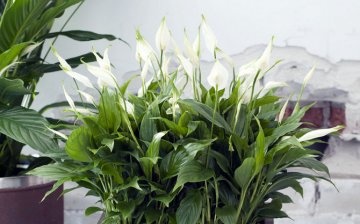
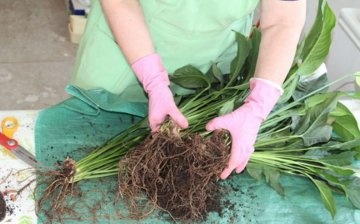
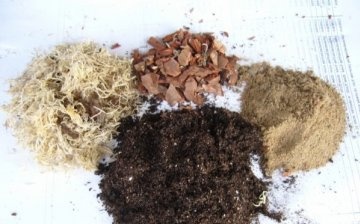
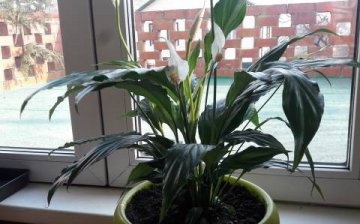


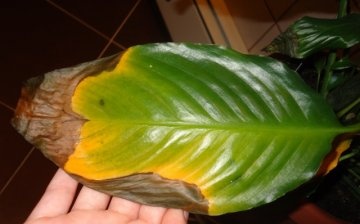








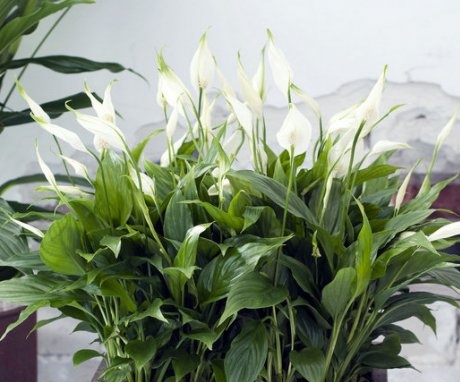
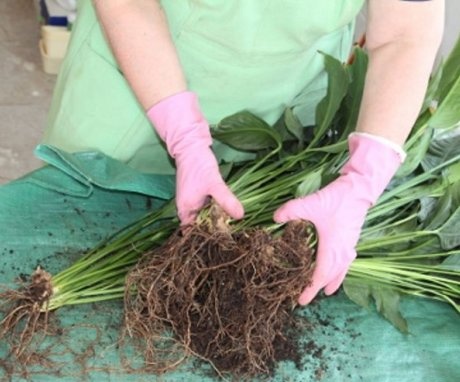
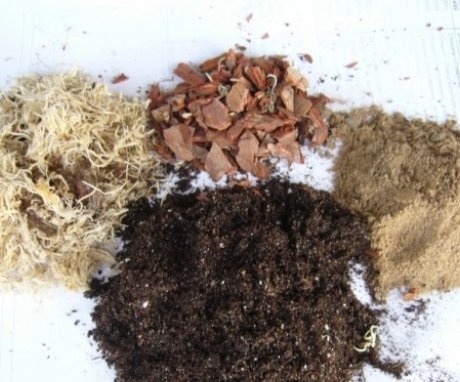
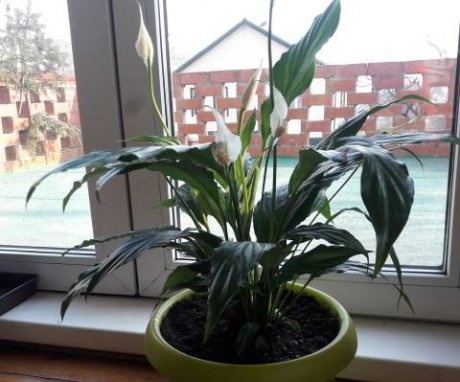
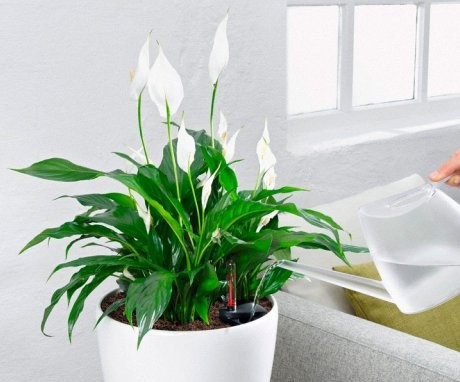
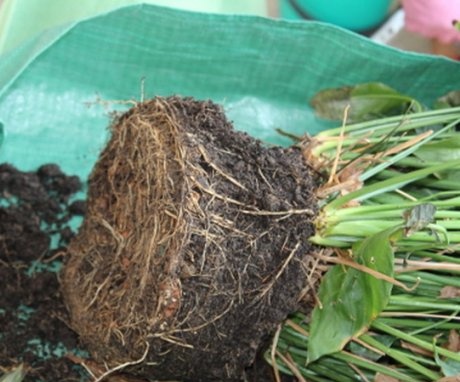
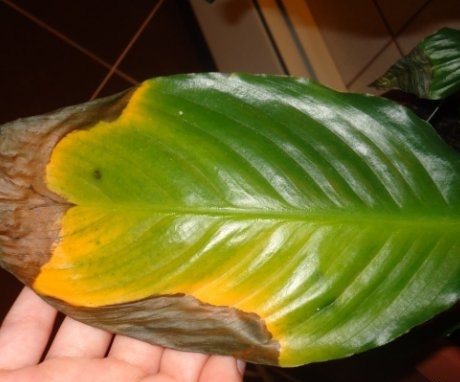
My Spathiphyllum has been growing for a long time and obviously the conditions that I create for him are completely suitable for him. Blooms profusely and for a long time. I water as the soil dries up, sometimes I see that the leaves tilt down - this means that it's time to water the flower. I sit in the same way as I grow.